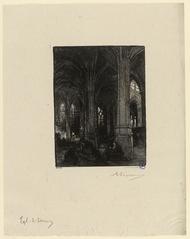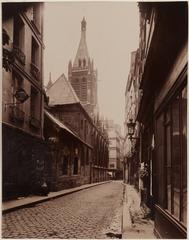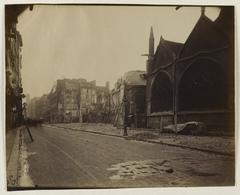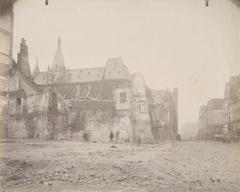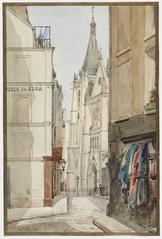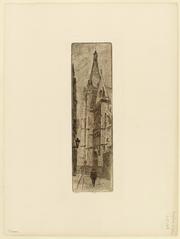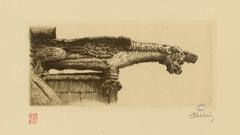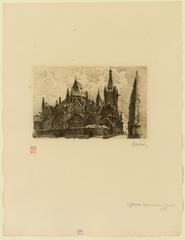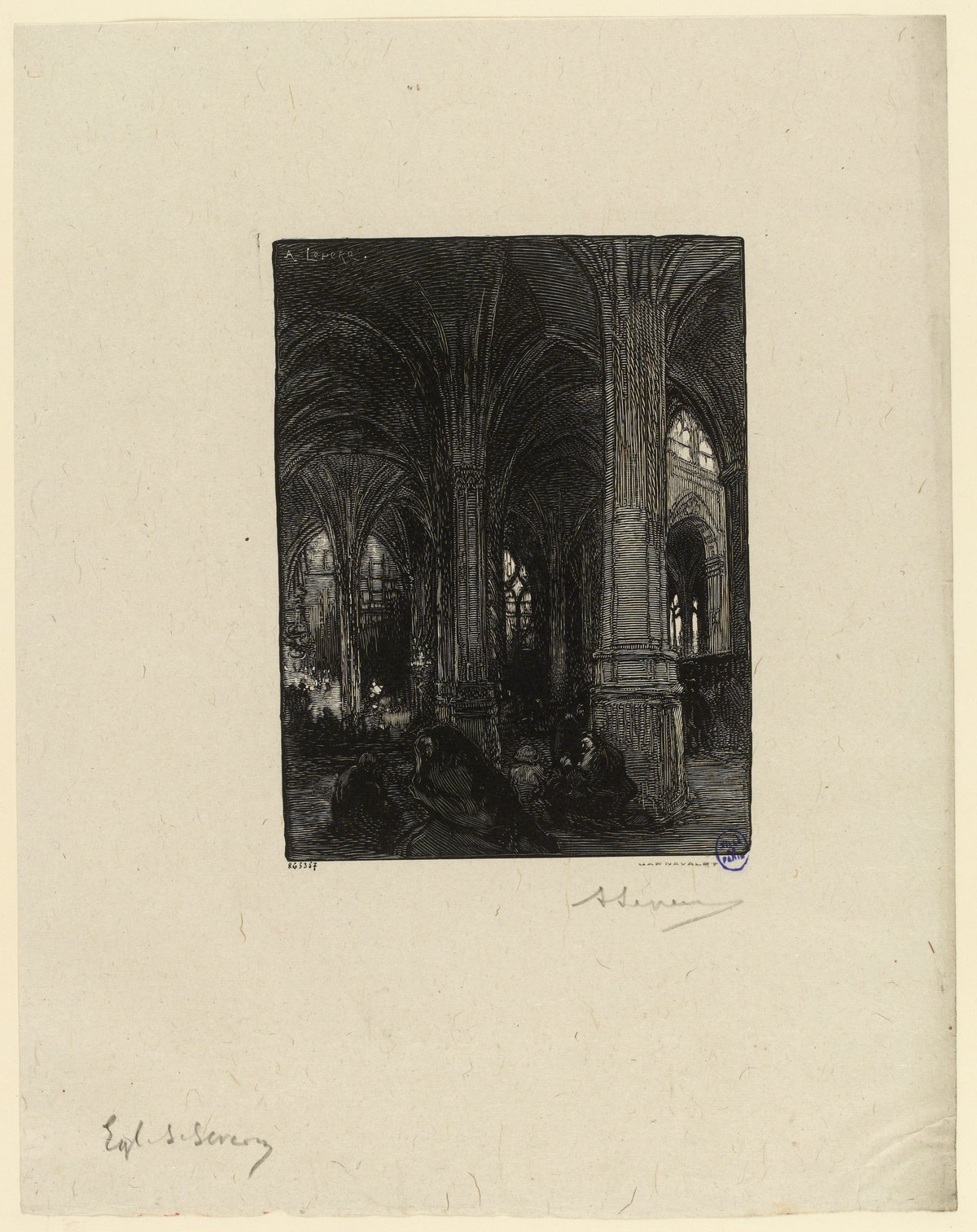
Saint-Séverin Paris Visiting Hours, Tickets & Historical Site Guide
Date: 14/06/2025
Introduction
Nestled in the heart of Paris’s vibrant Latin Quarter, the Saint-Séverin Church stands as a remarkable testament to the city’s layered history and architectural splendor. Renowned for its Flamboyant Gothic style, stunning stained glass, and the iconic twisted pillar, Saint-Séverin is both an active parish and a cultural treasure. This comprehensive guide covers everything you need to know about visiting Saint-Séverin: historical highlights, visiting hours, ticket information, accessibility, nearby attractions, and insider tips to enrich your experience (delveintoeurope.com; paris1972-versailles2003.com; paris.cityandciv.com).
Table of Contents
- Historical Overview
- Architectural & Artistic Highlights
- Saint-Séverin Visiting Hours & Tickets
- Visitor Information & Tips
- Nearby Attractions
- Frequently Asked Questions (FAQ)
- Summary and Final Tips
- References
Historical Overview
From Hermitage to University Parish
Saint-Séverin’s origins trace back to a 6th-century hermit, Saint Séverin, whose oratory became a site of Christian worship. After Viking raids destroyed the early chapel, a Romanesque church was built in the 11th century, serving the burgeoning University of Paris community (delveintoeurope.com; paris.cityandciv.com). By the 13th century, the church’s role as the university’s parish solidified its place at the heart of the Latin Quarter, making it central to the intellectual and spiritual life of medieval Paris.
Gothic Transformation
A major reconstruction in the 13th–15th centuries brought Saint-Séverin into the Gothic era. After a devastating fire in 1448, the church was rebuilt in the Flamboyant Gothic style, completed around 1520. The result is a masterpiece with soaring vaults, elaborate tracery, and a rare double ambulatory with the famous twisted central pillar (paris1972-versailles2003.com; Travel France Online).
Later Additions & Resilience
Subsequent centuries saw expansions, Baroque additions, and the construction of the unique charnel house and cloister. During the French Revolution, the church was secularized and repurposed, yet key historic elements—like the bell “Macée” (cast in 1412, Paris’s oldest)—survived (paris.cityandciv.com). Restoration in the 19th and 20th centuries ensured Saint-Séverin’s ongoing role as a center for worship, music, and community events (sortiraparis.com).
Architectural & Artistic Highlights
Flamboyant Gothic Masterpiece
Saint-Séverin is celebrated for its Flamboyant Gothic architecture. The double ambulatory—a rarity in Paris—features a forest of palm tree-shaped columns, culminating in the iconic twisted central pillar, a marvel of both structure and symbolism (Travel France Online). The church’s soaring nave and intricate tracery exemplify the era’s ambition and craftsmanship.
Stained Glass Windows
The church’s stained glass spans the late 14th century to modern times. Medieval masterpieces include the Tree of Jesse rose window, while 19th-century windows by Émile Hirsch depict saints and Parisian life. The seven modern windows by Jean René Bazaine (1970) in the ambulatory offer an abstract meditation on the sacraments, seamlessly blending old and new (paris.cityandciv.com; Lonely Planet).
Charnel House and Cloister
The 15th-century charnel house—one of Paris’s last above-ground examples—encloses a peaceful cloister garden, offering visitors a rare glimpse into medieval funerary architecture (fr.wikipedia.org).
Artistic Treasures
- Sculpture & Painting: Works by Claude Vignon and Paul Landowski, along with 15th-century choir stalls and murals from various eras, enrich the interior (Travel France Online).
- Historic Organ: The 18th-century organ by Jean Ferrand remains a centerpiece for regular concerts (World Atlas).
Saint-Séverin Visiting Hours & Tickets
-
Opening Hours:
- Monday to Saturday: 11:00 AM – 9:30 PM
- Sunday: 9:00 AM – 8:30 PM
(Hours may vary on holidays or during special events; check the official website before your visit.)
-
Entry Fee:
- Free entry for all visitors; donations are encouraged to support preservation.
-
Tickets:
- No advance tickets required for general admission.
-
Guided Tours:
- Occasional guided tours are available; inquire on the parish website or at local tourist offices.
Visitor Information & Tips
Location & Getting There
- Address: 3 Rue des Prêtres Saint-Séverin, 75005 Paris
- Metro: Saint-Michel Notre-Dame (Line 4, RER B/C)
- Bus: Multiple lines serve the area.
- The church is in a pedestrian-friendly zone, close to the Seine and Notre-Dame.
Accessibility
- The main entrance is wheelchair accessible; some medieval areas have uneven flooring.
- Assistance is available upon request.
Photography & Etiquette
- Non-flash photography is permitted; please avoid disturbing worship or services.
Best Times to Visit
- Early mornings or late afternoons offer a more peaceful atmosphere.
- Evening organ concerts are a highlight for music lovers.
Amenities
- Restrooms available.
- Leaflets and information panels provided in multiple languages.
Nearby Attractions
Saint-Séverin’s prime location makes it a perfect starting point for exploring the Latin Quarter:
- Notre-Dame Cathedral (currently under restoration)
- Shakespeare and Company Bookstore
- Bouquinistes (Seine-side bookstalls)
- Place Saint-Michel and its iconic fountain
- Musée de Cluny (National Museum of the Middle Ages)
- Numerous cafés and restaurants
Frequently Asked Questions (FAQ)
Q: What are the opening hours?
A: Monday–Saturday: 11:00–21:30; Sunday: 9:00–20:30. Confirm on the official website.
Q: Is there an entry fee?
A: No, entry is free; donations are welcome.
Q: Can I take photos?
A: Yes, non-flash photography is allowed; please respect the sacred atmosphere.
Q: Are guided tours available?
A: Occasionally, yes. Check the parish website or with local tour operators.
Q: Is the church accessible for visitors with limited mobility?
A: The main entrance is accessible; some areas may be challenging due to uneven floors.
Summary and Final Tips
Saint-Séverin Church is a must-visit among Paris historical sites, offering a harmonious blend of history, architectural innovation, and cultural vitality. Its Flamboyant Gothic features—the double ambulatory and twisted central pillar—alongside centuries of stained glass and resilient community history, make it a living monument to the Latin Quarter’s spirit (Travel Curious; Paris Top Ten). Visitors enjoy free access, a convenient location, and a unique opportunity to experience both tranquility and artistic grandeur in the heart of Paris.
Pro Tips:
- Combine your visit with a stroll through the Latin Quarter and the nearby Seine.
- Attend an organ concert for a truly memorable experience.
- Visit during off-peak hours for a quieter atmosphere.
- Download the Audiala app or check our website for interactive maps and virtual tours.
References
- Saint-Séverin Paris: Delve Into Europe
- Paris 1972 Versailles 2003: The Church Saint-Séverin
- Église Saint-Séverin de Paris, Wikipedia (French)
- Saint-Séverin Church in the Latin Quarter, Sortir à Paris
- Saint-Séverin, Paris, Wikipedia (English)
- Travel France Online: Saint-Séverin Church’s Flamboyant Pillar
- World Atlas: The Church of Saint Séverin
- Lonely Planet: Saint-Séverin Church
- Paris Top Ten: Saint-Séverin
- Travel Curious: Church of Saint Séverin
Images for publication should include high-quality exterior and interior shots, with alt text such as “Saint-Séverin Church Exterior in Paris” and “Twisted pillar inside Saint-Séverin Church.” For more, download the Audiala app for curated audio guides and interactive maps.
